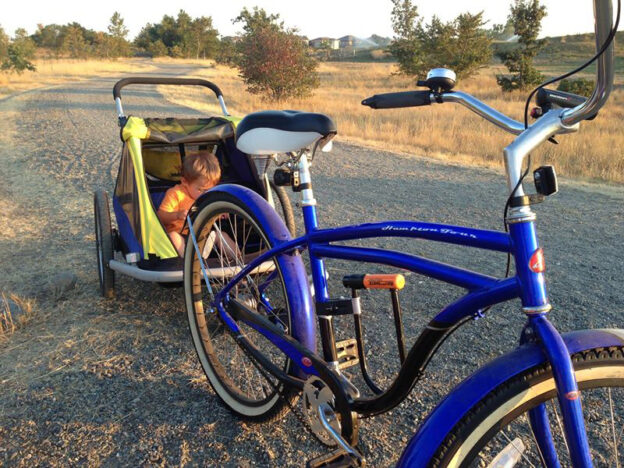January 2021. California.
Bikes are a great way to get around. Good exercise and Zero emissions. I have friends and colleagues who commute to work by bike. Could this work for you? Is it practical? Is it possible? How about biking for local errands? Here are some of my thoughts and a few examples from the past 30 years when I was able to commute on bike.
Today I’m fortunate to live in a region that’s made for biking, and in a town that has built safe bike lanes and dedicated bike paths for over 50 years. I often write about electric cars because of their low emissions and energy savings, but bikes are even better. Over the past year I’ve realized how much I miss riding, so this post is an ode to bicycles.
Schwinn Continental – College Commuter
My freshman year of college I lived off campus in New Brunswick and rode my bike to classes. That was 30 some years ago and I was riding my oldest brother’s hand-me-down ’72 Schwinn Continental like the one below.
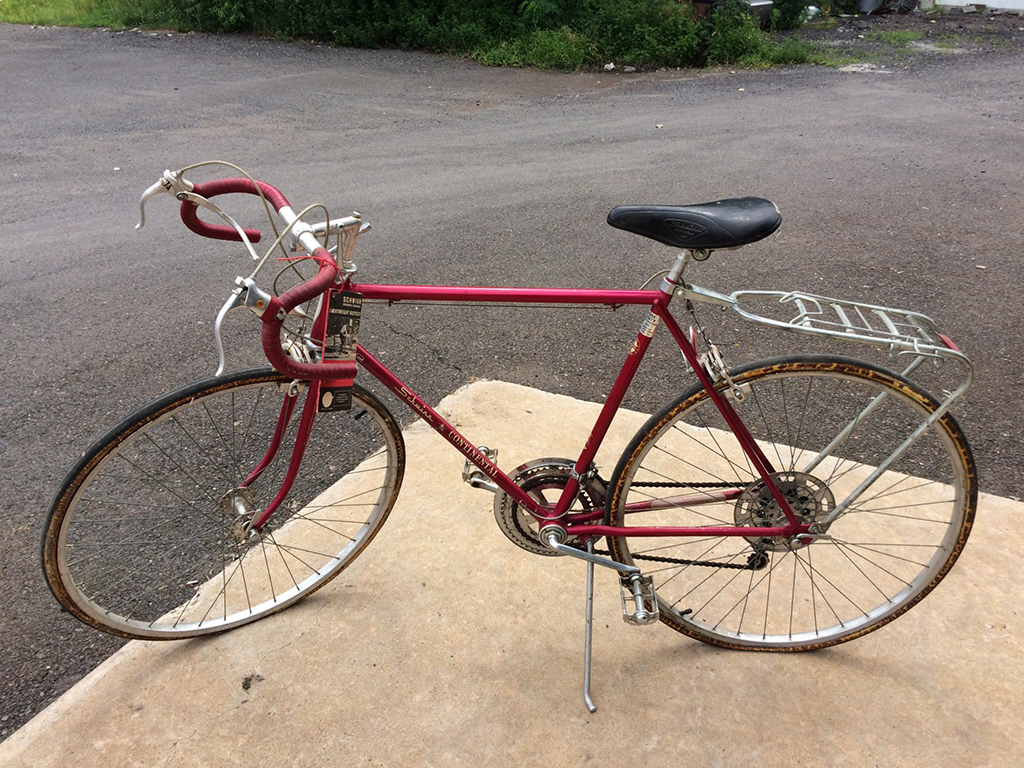
I added full length fenders so I could ride to class rain or shine. I logged about 10 miles a day riding to classes and to the campus commons for meals so I kept rain gear in my backpack for the rainy days. A couple things I remember about the Schwinn: that it wasn’t very light – something I realized later; that I had to avoid hitting the stem-mounted gear shifters with my knees when I stood to peddle up hills; and that the front fender was pretty good at directing water right onto my shoes when it rained.
Trek 311 – College Commuter and Road Bike
After one semester riding the Schwinn I was lucky enough to get a Trek. Twelve speeds! Friction shift levers on the down tube! Quick release hubs! And a bit lighter. The 311 was Trek’s base model at the time, but 10 years made a big difference in manufacturing of affordable bikes – this was a nice bike.
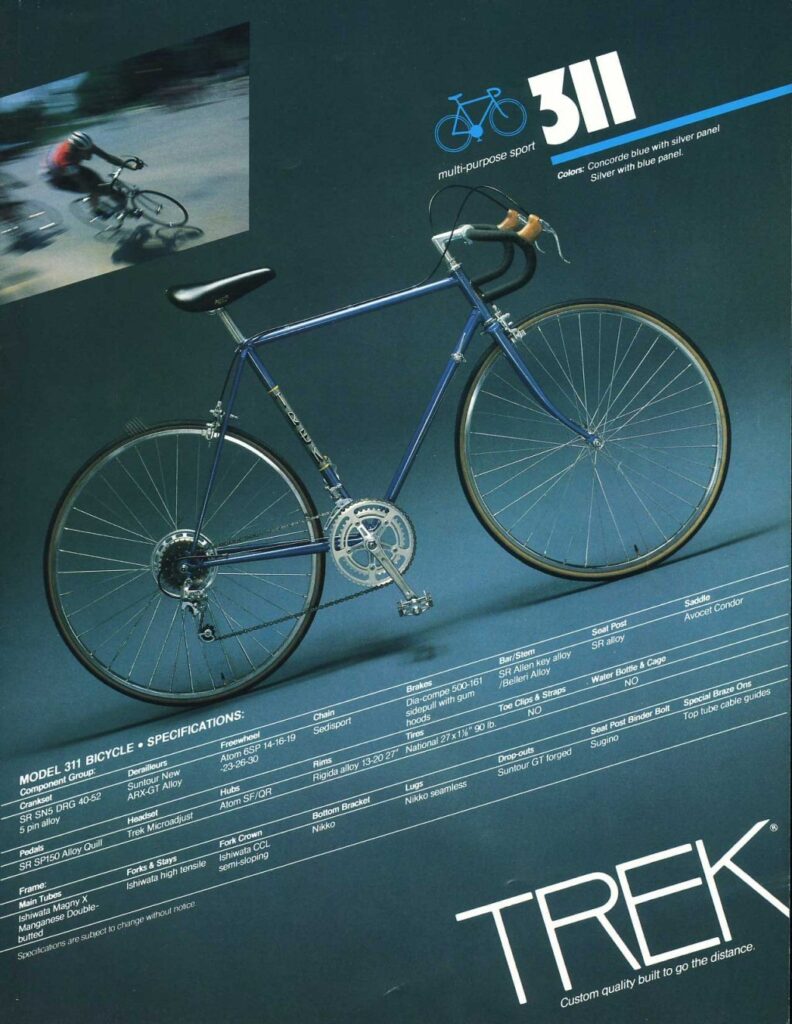
I added a book rack, seat bag for tube repair, water bottle on the down tube, and an air pump on the seat tube. I took the chain guard off the rear wheel and didn’t put fenders on this bike – not a cool look to my 18 year-old self. I carried most of my books in a backpack, and learned to strap cardboard on the book rack when roads were wet to cut down on water flying off the back wheel… but I still got a wet ass whenever it rained.
I went through another semester without on-campus housing. New Brunswick was 45 minutes from my hometown, and 20 minutes out of the way for my father’s commute. So every morning he drove me to New Brunswick – Just one of many things he did for his kids. I’d pull my bike out of the trunk of his Datsun 210, snap on the front and back wheels, and pedal off to class. Evening routine was to meet at a certain intersection at 5PM…. this was before the cell phone era.
Back then I wasn’t thinking of my bike as a commuter, but as a necessity. Still, I loved this bike and over the summer I started going out for evening rides just for the pleasure of riding rural roads and up and down the hills of Warren county. Back at school I finally got on-campus housing but by this time I preferred riding my bike to class over using intercampus shuttles – going on bike was quicker and more convenient – so I still rode around 10 miles a day to classes.
The Trek was a straightforward road bike that had everything I needed. I brought it with me when I moved to the DC area in the early 90s, but after 15 years of service – and just after I’d repacked the bearings and replaced the chain – my Trek was stolen. The key and shattered pieces of the U-lock were all that remained. Sad day but life goes on.
F900 in DC
At this point I was a grad student eating tuna fish and pasta for lunch and dinner everyday and I didn’t have money to replace the Trek with anything new. So rather than buy a used bike I volunteered to be a human subject for some not so painful human subject trials at the NIH hospital. One of those trials paid a whooping $1000, big money for me back then.
I lived in Friendship Heights at the time and rode about 4 miles to Bethesda along Wisconsin Avenue. I was looking for a sturdy hybrid bike with a front suspension for the commute, but also planned to use the bike for longer rides. While suspensions give you a smooth ride, they also absorb some of your energy instead of directing all of it to the wheels. At that time Cannondale was selling bikes with a head shock you could turn on for bumpy rides and off for smooth roads, all on the fly. This was a big selling point in my eyes so I traded in those hard earned dollars for a ’97 Cannondale.
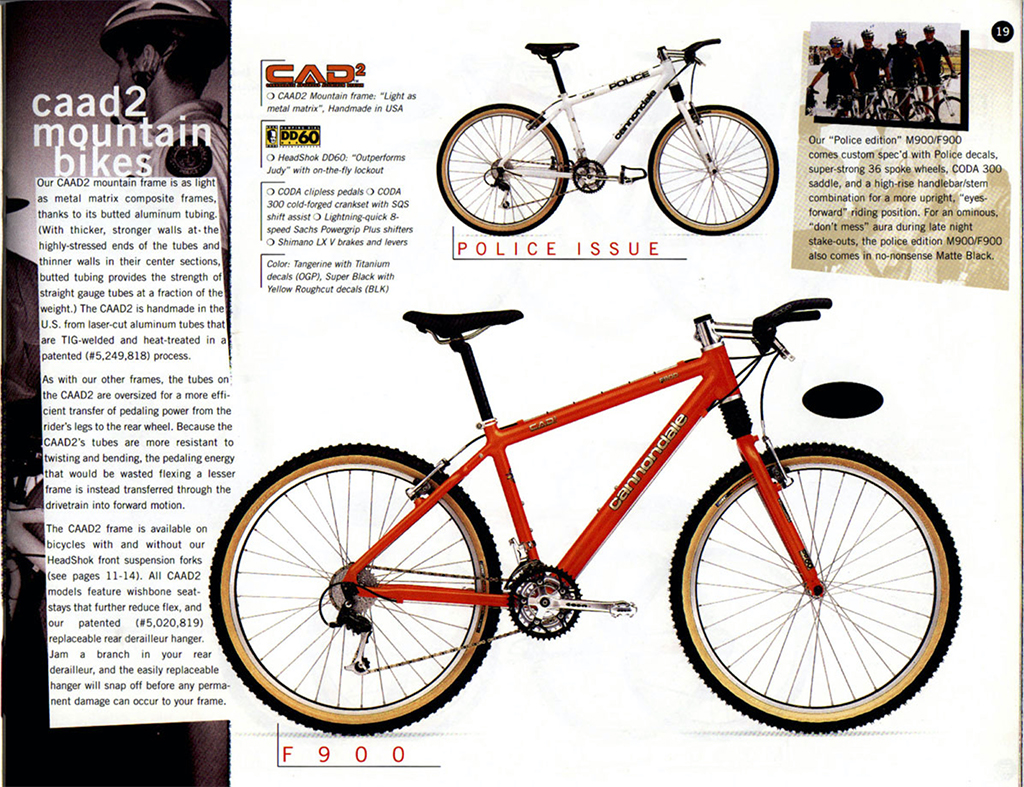
Cannondale’s Headshok was great for my purposes. There were no dedicated bike lanes or routes I could use at that time along Wisconsin Avenue – it didn’t even have a shoulder, so I rode on sidewalks for most of the trip to avoid the heavy traffic. The Headshok was good for riding up and down curbs between DC and Bethesda, and I could turn it off when it wasn’t needed. Riding to work by bike was cheaper, efficient, and gave me a bit of exercise. All in all it worked well for me.
BTW: I’m a sentimental guy, so I strapped the key from my Trek’s U-lock to the handlebar of the new bike, and it still hangs there today. I also added front and back lights to be seen easier… and of course wore a helmet.
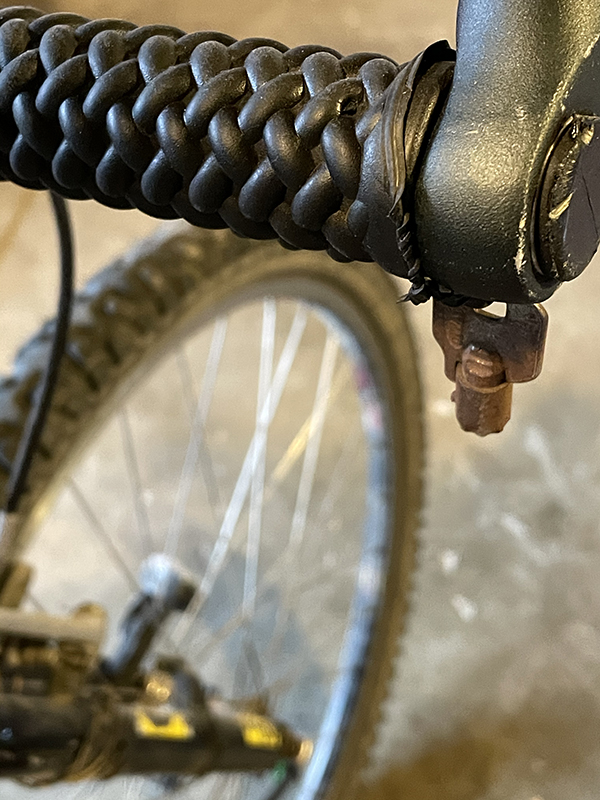
F900 in NYC?
After grad school I moved to Manhattan during a renters market. I found a studio apartment on Riverside Drive between 101st and 102nd St on the fifth floor of a five story walk-up. 325 square feet and a view of the internal courtyard, all for $900 a month. So every day I carried the bike up and down the stairs. It wasn’t heavy, but I had to be careful not to leave tire marks going up and down the stairwell. There wasn’t a whole lot of space in my room so I got a bike pole with arms and hung the bike on the wall above my dresser. Welcome to NY.
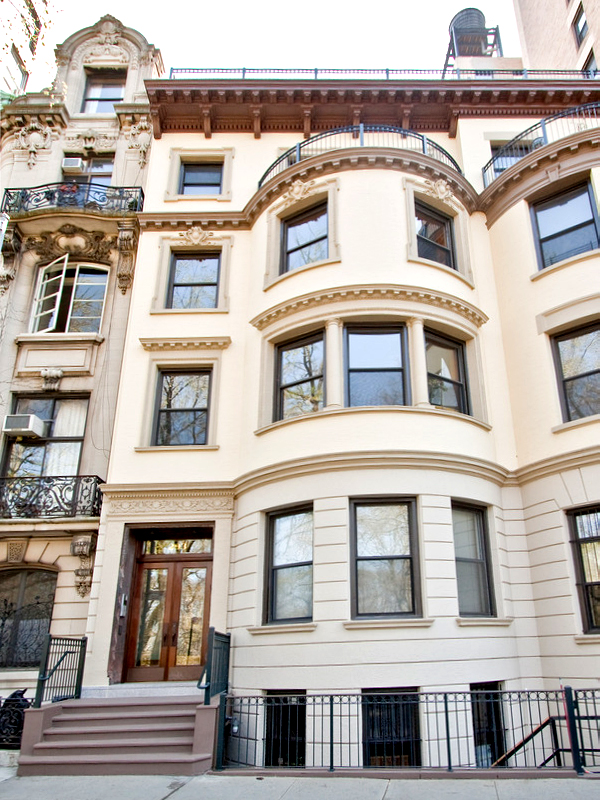
My first 2 years in NYC I rode my bike to work, and was fortunate I could take the subway if I didn’t feel like riding in rain or snow. Biking was better. I had views of the Hudson River and the GW Bridge, and the morning commute finished with a nice climb up Riverside Drive into Washington Heights. The evening ride home was an easy coast back down to the Upper West Side. Once again the Headshok came in handy riding in NYC.
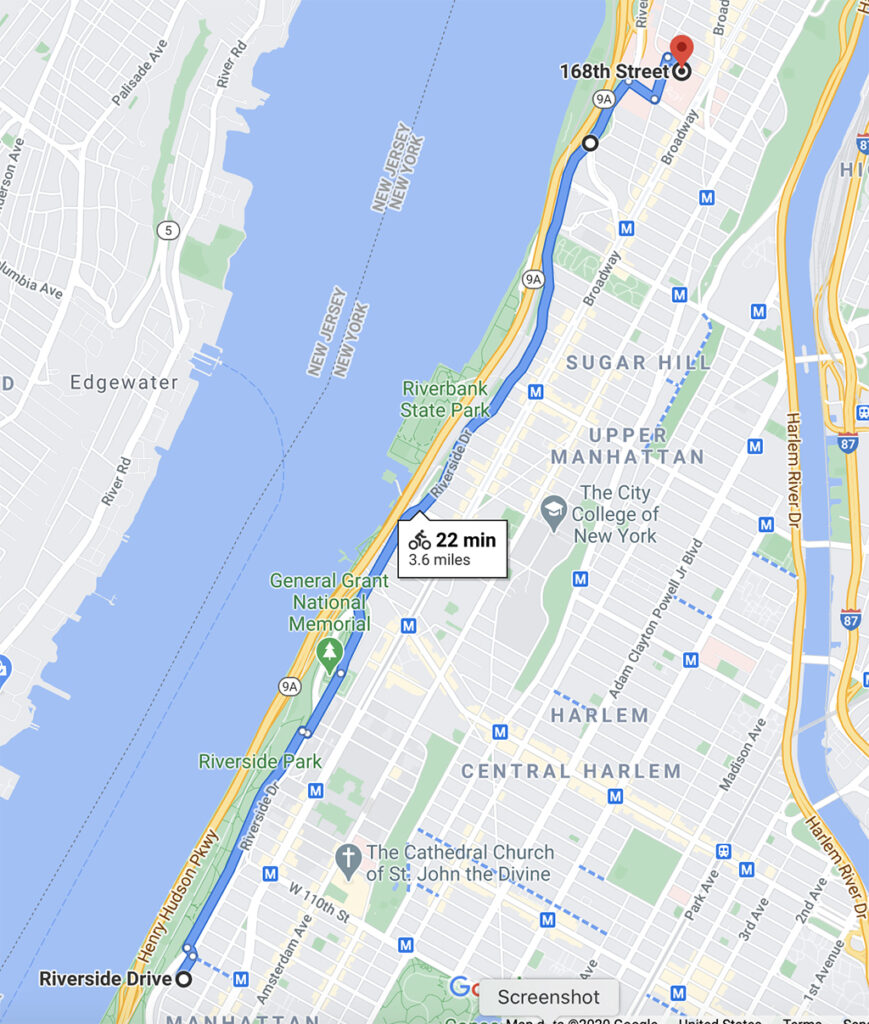
Highlights from that time include evening rides in the fall, listening to Gary Cohen’s play-by-play call of Mets games on WFAN with a small AM radio and an earbud. Another was the 5 borough Century tour. A nice, long ride with friends, great way to see the city up close. In preparation for that event we went on rides across the GW bridge and up the Palisades Parkway to Nyack. Nice ride.
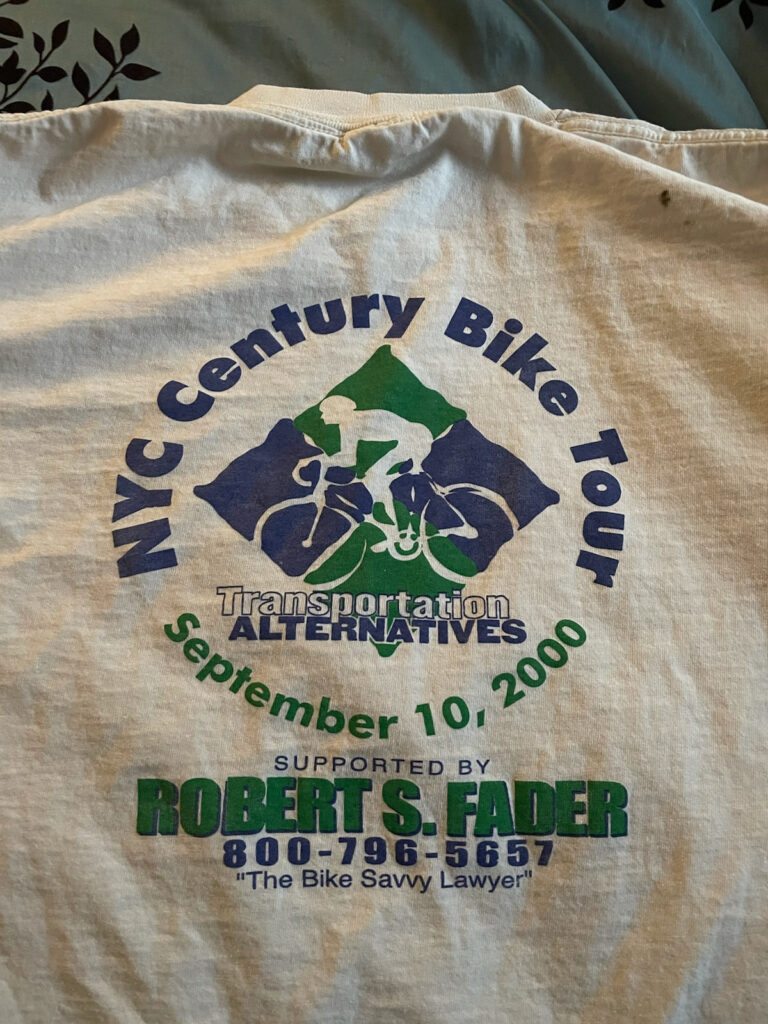
After September 11th security guards in the building where I worked would no longer let me bring my bike inside to keep in my office. They said bikes could be a security threat so I’d have to lock it up outside on the street. This is not something you do with a bike you want to keep in NYC, so from then on I took the subway. But for those first 2 years, biking in New York worked well.
I should add that I was younger then and didn’t worry about traffic. And in truth, riding on Riverside Drive was probably safer than other streets in Manhattan, and it was so much better than taking the elevator up out of that dank 1/9 subway station at 168th St. So again, biking worked well for me at the time. BTW: I was back in NYC in December 2019 and was pleasantly surprised to see the number of bike lanes and paths that have been built. NYC, like other cities, has made efforts to cut down on traffic congestion by improving bicycle infrastructure.
Cruisin’ California’s Central Valley
Fast forward to today. Now I live in California’s Central Valley and work 17 miles from home. During ‘normal times’ I’d drop my kids off at school before and after work, adding up to a 50 mile commute every day. This makes biking to work difficult – but of course not at all impossible. I know people who make this commute on bike. To compensate we’ve been driving the most efficient cars we can get.
So back to our town. When we first moved I was told that bike theft was a problem. I really didn’t want to lose another bike, and since it’s flat as Kansas out here I picked up a cruiser bike to use around town. I like the riding position of the cruiser bike. Sitting up straight up isn’t aerodynamic but it’s comfortable.
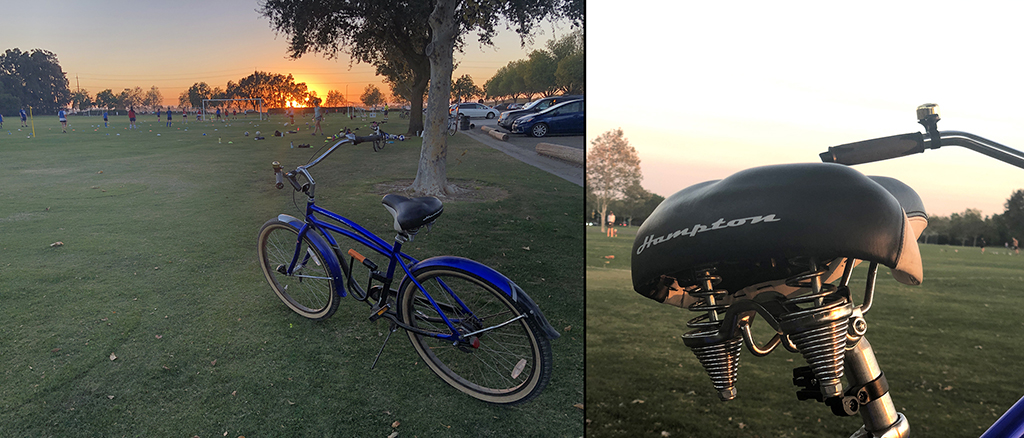
Early on we got a trailer for the kids and pulled them around town to various events. I never did use the trailer as much as I thought or hoped, but it came in handy while the kids were young.
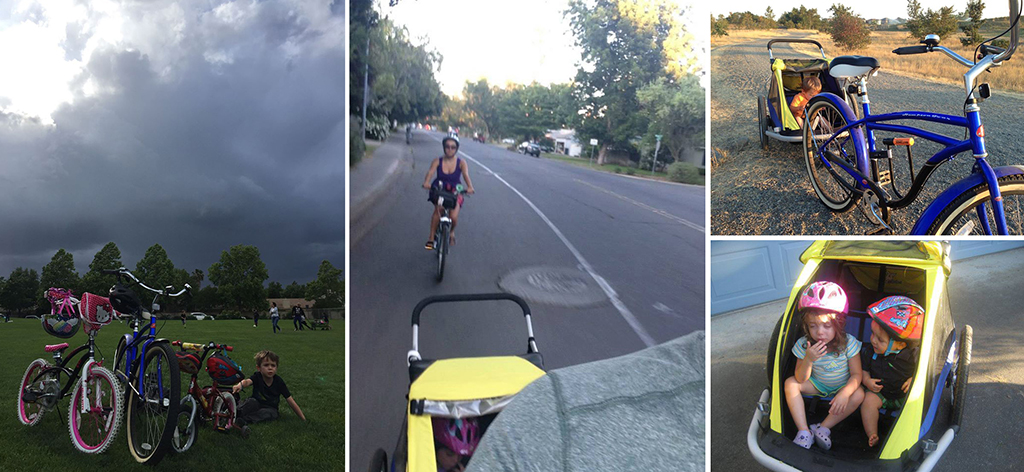
As the kids got older we began exploring bike paths around town, sometimes with friends, stopping anywhere that looked interesting.
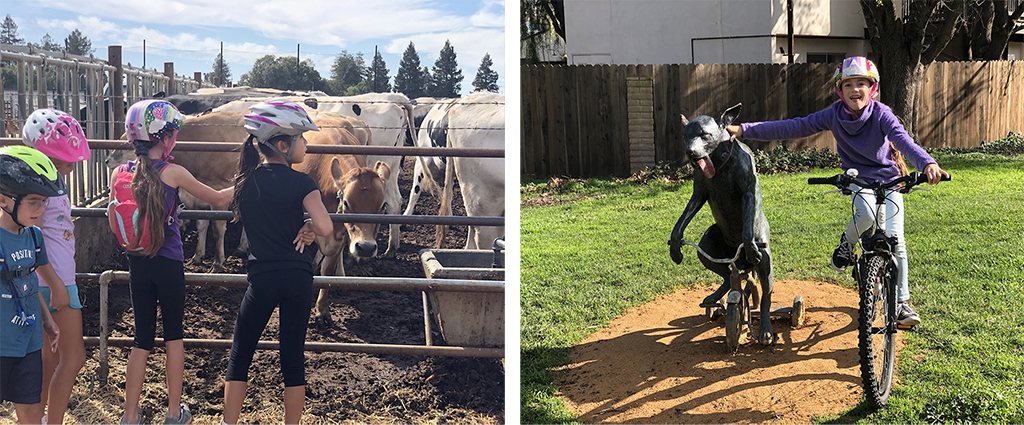
After the home virtual schooling routine started in March 2020 we still got out when possible. We’d go out as early as school or work permitted to avoid the heat, and always wore our masks…. 😷
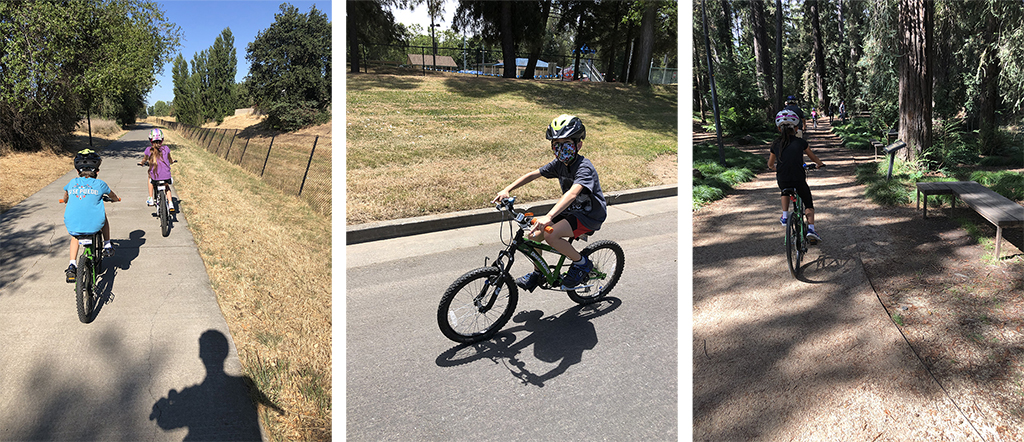
We also try to get out for rides when traveling. Two absolute favorites for me were riding around Yosemite Valley and riding the boardwalk on the Jersey Shore while visiting family.
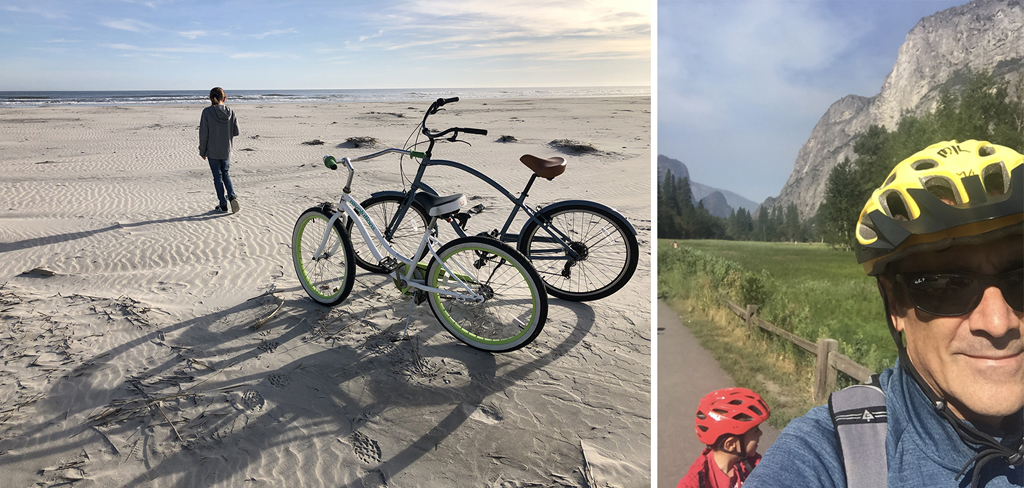
Biking is a great family activity – not always easy – but good for the soul. And for me it brings back memories of bike rides with my brothers when I was growing up in Jersey.
Dusting off the Cobwebs
By now I’d gone a long time, nearly a decade, without using my ‘real’ bike, and decided it was time to bring it out of hibernation. So I pulled it out of its hiding place, hosed off the dust and spiderwebs, pumped up the tires – surprised they still held air – and took it out for a spin.
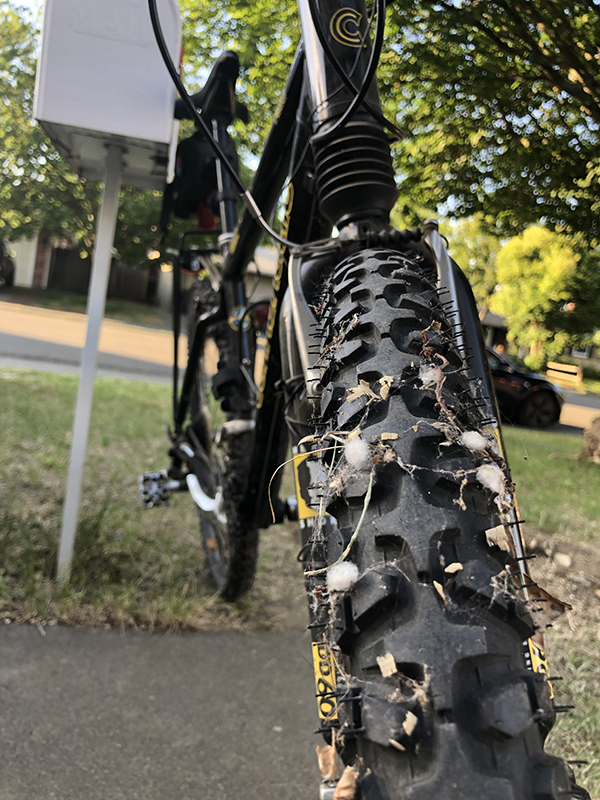
It was great to get out on the old bike again…. it’s over 20 years old now! As I rode around town I remembered how much I love riding. It’s such a simple, natural pleasure. I especially enjoy the feeling of cruising down a road, finding a comfortable gear, a steady cadence in tune with lungs and mind, put my mind in neutral, take in the surrounding sights, sounds, and smells, and let my mind wander where it will. It’s great relaxation.
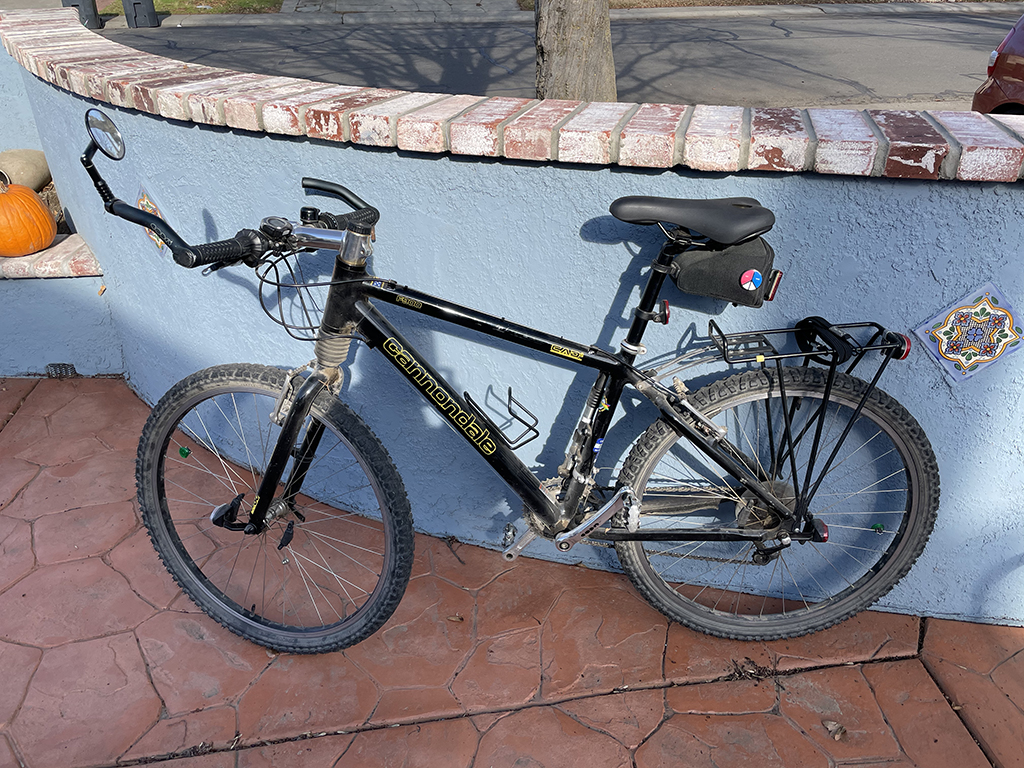
I don’t commute by bike now so I haven’t added much to the bike. But I did find a neat pair of magnet-induced Reelights that don’t use batteries and have bright LEDs to help others see you when it’s dark.
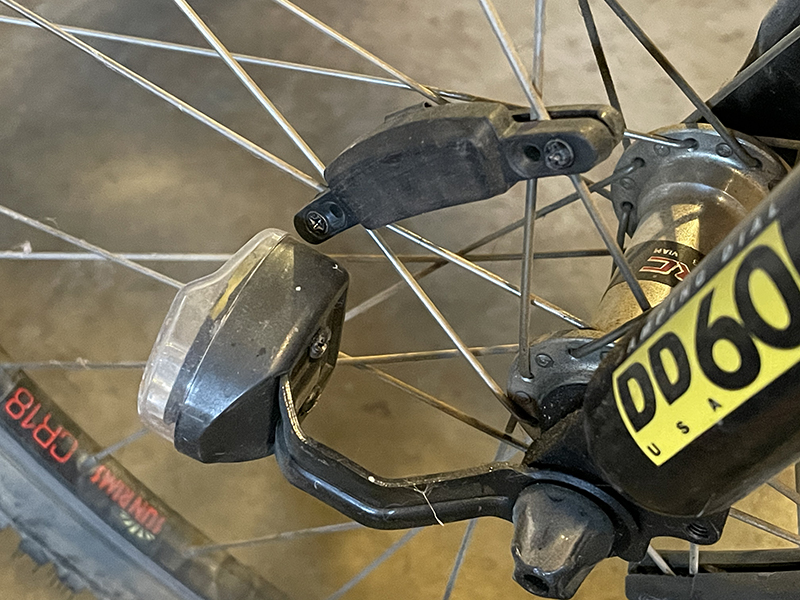
Health and the Environment
Health and the environment go hand in hand. Bikes are clean transportation. You get good exercise for body and mind, and don’t produce GHGs as you travel. It’s a great way to explore, relax and, for the fortunate, the best way to get to work.
In my town of 65,000 over 20% commute to work by bike. Among large cities Portland ranks first with 6 to 7% commuting by bike. It’s even better in some European cities. As an example, one of the most impressive sights from a trip to Amsterdam was seeing an enormous 3-story parking garage, for bikes, jam packed full.

If you feel that commuting to work by bike might not work for you, electric bikes are getting cheaper and are option to keep in mind. E-bikes extend the distance you can commute in a reasonable amount of time and are encouraging more and more people to bike to work. Check out bike routes in your area and think about whether it could work for you. And if it doesn’t, try to find time to go for a ride in the evenings or on weekends. Take your bike to the local grocery store if you can. It is a great way to get around.

